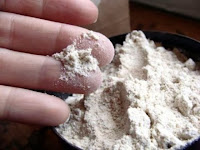Awesome! Beautiful! The pond
looks great, how did they do that? These are just a few of the comments from
visitors to the Flower Bin indoor fish pond, lately. And it has been an amazing
transformation, one that took over a week to accomplish. Luis started with a
vision of how he wanted the pond to look. It had been more than 10 years since
we first installed the fish pond at The Flower Bin and over those years, the
fish and the pond have been a popular destination spot at the ‘Bin.
Luis, with
Nacho (pictured) and Rick’s help, began by removing as much of the old pond as
possible, while leaving the fish alone as long as possible. To finish the excavation, the fish were moved
to a temporary holding tank, with supplemental pumps running for oxygenation.
Next,
a woven fabric underlay was installed and then the rubber liner was set in
place.
The old skimmer was replaced with one that holds two pumps instead of
one. Piping was installed along both sides of the pond to feed each up-flow
filter, at the top of the waterfall.
The skimmer and both up-flow filters act
together to keep the pond water clear and healthy for the fish. The addition of
two large sandstone slabs allows the fish to swim under the walk. This also
hides the aeration pump, which runs 24 hours a day.
Moss rock was carefully added
to the exterior of the pond and a large piece of flagstone was set to enhance
the waterfall. A stone path was laid to allow easy access to the pond.
The fish
were carefully returned to their new home, where they enjoy entertaining
visitors of all ages. Are you interested in adding a pond to your garden? Bring
us your ideas and we will help you design the pond you’ve always wanted,
including ordering the right equipment to keep your pond healthy and low
maintenance. Go to our Pinterest account to see more images of the pond
rebuilding project: http://www.pinterest.com/flowbinco/rebuilding-the-pond/



















































